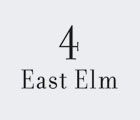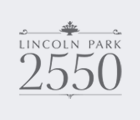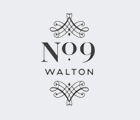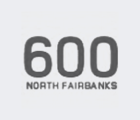While the local housing market struggles to climb out of the doldrums, wealthy would-be homeowners are plunking down sky-high sums for lofty, luxurious homes in new downtown condo towers. What’s driving those sales? Timing, timing, timing.
By Dennis Rodkin, Chicago Magazine
In the first few months of 2010, as some local developers slashed prices or staged auctions on their newly built condominiums, a small segment at the upper end of the condo market flourished. As Gail Lissner of Appraisal Research Counselors notes, “There are always wealthy people with the ability to buy.” The big difference lately is that those well-heeled folks have been shelling out princely sums to buy luxurious new condos in downtown high-rises. “These are not speculators buying cookie-cutter condos,” says Lissner. “By and large, they are buying to live in these really high-end, unique places.”
Consider these numbers: From the beginning of the year until the middle of May, about 40 downtown condos have been sold for $2 million or more—and most of those condos were in buildings that opened in the last two years. (Some sales may have not yet appeared in public records.) They ranged from an $8.182-million sale at the Elysian—the 60-story tower at 11 East Walton Street designed by Lucien Lagrange—to a three-bedroom unit that went for a little more than $2.24 million at Aqua, the much-praised skyscraper at 225 North Columbus Drive that Jeanne Gang designed for Magellan Development. (The Elysian sale was the highest price paid for a Chicago condo since November 2006, when a 61st-floor unit at the Park Tower—at 800 North Michigan Avenue—went for $8.275 million.)
To update an old real-estate adage: timing, timing, timing. Many of these new elite homeowners made their decision to buy several years ago, while buildings were under construction or still in the planning stage—and before the recession punctured the real-estate boom. With those condo towers now ready for residents, the folks who agreed years ago to buy are finally inking the deals.
That’s generally what’s been happening at the Elysian. Since January 1st, at least 16 buyers there closed on condos priced at $2 million or more (in addition to the $8.182-million sale already mentioned, one condo went for $7.25 million and another for $6.9 million). That’s on top of a first round of December 2009 closings at $2 million and up. Meanwhile, at The Legacy (which recently opened at 60 East Monroe Street), three units priced at more than $2 million were among the first closings in the building—and usually the earliest buyers sign off on the earliest closings. (Since condos on a building’s bottom floors are often finished first, some lower-level, lower-priced units bought during construction can also be among the earliest closings.)
Buyers who signed contracts before the bust could have opted to cancel their contracts when the economy soured—as did numerous buyers of medium-priced homes. But “10 percent [the standard deposit on a condo] is a lot to walk away from” on a multimillion-dollar sale, Lissner says. Still, as she suggests, it’s also likely that for many of these rich buyers “their lifestyle hasn’t changed in the downturn.”
Many rich people have not had to worry about the tight mortgage-financing climate that has contributed to the drag on the larger real-estate market. Mortgage lenders have been requiring bigger down payments, higher credit scores, and more detailed documentation of financial histories from average buyers. These aren’t issues [wealthy potential homeowners] have to think about. On top of this, their buying had nothing to do with the $8,000 federal tax credit.
That is especially true of well-to-do buyers who made their purchase decisions recently. In early May, someone paid $2.3 million for a previously owned condo on the 51st floor of the Trump International Hotel & Tower (that building, at 401 North Wabash Avenue, opened in 2008). Another buyer spent $3.45 million in April for a 54th–floor condo at 55 East Erie that an investor had held on to since 2003. These new purchasers are almost always cash buyers. They see the value in buildings like Trump and the Elysian, and they’re banking on knowing that whenever the market gets better, they will be holding valuable real estate.
With all this talk of pricey purchases, don’t get the idea that the market’s doldrums haven’t affected luxury condo sales. Look at 50 East Chestnut, where prices start at $2 million. Tucked into a prime Gold Coast location with a full-floor layout for each of its 34 condos, the building notched 17 sales from its opening in late 2007 through the end of 2008. Since then, there have been only two sales, one in 2009 and another in the first four months of 2010. The condo that sold this year did go for $3,335,875, but a unit of the same size one floor up went for $3.964 million in late 2008.
Once again, timing may have been a factor in these stalled sales. The building opened several years after an earlier wave of luxury condo towers—such as Park Tower (which opened in 2000) and the Fordham (which opened at 25 East Superior Street in late 2002)—welcomed their first homeowners. And the opening of 50 East Chestnut coincided with the market’s collapse, which leads to the conjecture that some buyers may have canceled contracts. (Developers are reluctant to discuss sales downturns, and public records are equally mute.)
It’s also important to note that high-end sales weren’t restricted to only the new condo towers. At the 21-year-old Bloomingdale’s building (formally called 900 North Michigan), a new block of condos, built on eight floors vacated by the J. Walter Thompson ad agency, recently hit the market. Three of those condos were sold this year for more than $2 million, including a three-bedroom unit that went for $4.75 million in February. Since being converted to condos in 2004, the Metropolitan Tower—built in 1924 at 310 South Michigan Avenue—has tallied more than 100 sales, with prices ranging from $250,000 to $800,000. But there have also been two sales in the $3-million range and three in the $2-million range; in 2008, the building’s 5,400-square-foot penthouse went for $6.144 million. And at the venerable Palmolive Building (1929), where condos were installed five years ago, a buyer closed on a $2.315-million sale just as this issue was going to press.
Granted, these eye-popping numbers need to be put in perspective. First, while precise statistics are hard to come by, anecdotal evidence (including past stories in Chicago) suggests that the number of high-end downtown condo purchases—the sales of new condos at places such as the Fordham, Park Tower, and the Palmolive, as well as resales on East Lake Shore Drive, in Water Tower Place, and at other locations—during the boom years would more than likely dwarf this recent spike.
Nor should one conclude that the condo news from downtown signals a newfound disdain for palatial ground-level houses. In fact, high-end single-family homes have been selling as well. In May, for instance, a Lincoln Park mansion priced at $8.5 million went under contract after only one month on the market. But the sales of expensive single-family homes have not occurred in one concentrated locale and so failed to make as big a splash. Anyone interested in buying a comparable house today will find plenty of luxury offerings, but they are widely dispersed—from Winnetka to Chicago to Hinsdale—and many of them have been lingering on the market for months, if not years.
Another thing to remember is that even though the sale prices for sumptuous downtown condos are high, in some cases they have actually deflated since the boom years. Consider the May sale at the Trump mentioned earlier. The condo’s original owner first put the unit back on the market at $3.2 million in June 2009, shortly after the developer delivered it. Whether the latest buyers had waited patiently for prices to come down or only became ready to buy this spring, they got the condo for $2.3 million—a 28 percent discount from the seller’s original asking price.
But that doesn’t mean the original owner took a loss, particularly if he bought at pre-construction prices (public records don’t reveal when he first agreed to buy or what he paid). A more characteristic exchange involves the couple who bought a $4.417-million unit in the new bank of condos at the Bloomingdale’s building in 2008. This year they resold the place for $4.75 million, realizing a tidy 7.5 percent profit.
Then there was the couple who closed on a $2.427-million unit at the Elysian in December 2009. A month later they turned around and sold the place for $3.2 million—a whopping 32 percent profit. It is unclear whether the couple had bought the property with the intention of flipping it. Maybe their lives changed in the years since they put down the deposit. Or maybe, with their eyes on the skies, they had simply decided it was time to trade up.
 The Aqua. Photo: Steve Hall, Hedrich Blessing Photographers
The Aqua. Photo: Steve Hall, Hedrich Blessing Photographers














